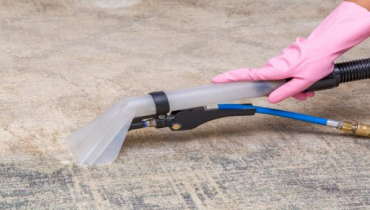
Rainbow Restoration explains that replacing carpet after water damage isn’t always necessary. Key considerations include:
|
Water damage can happen to just about anyone. And when it does, it’s very difficult to assess the full extent of the damage right away. However, one thing that is certain is, when water damage occurs, time is of the essence! This means the clock is ticking when it comes to minimizing the extent of the damage.
Act Quickly and Safely to Stop the Flow
First and foremost, safely stop the flow of water as soon as possible. Take extra caution before entering an area where electrical appliances, or other electrical equipment is present. If feasible, and to minimize risk, shut off the electric power before you enter a flooded room.
Next, move with purpose, but be aware that a wet floor can be very slippery—especially surfaces like tile. That last thing you need is to injure yourself while dealing with a flood situation. Carefully make your way to the source of the water and stop the flow. Once the flow of water has been stopped, take a quick assessment of the area. It’s important to deal with any standing water as soon as possible. The longer water sits in an area, the more extensive the damage.
Get towels, buckets, and/or a mop to remove as much standing water as possible. Also, try to minimize the flow of water from one area to another, use towels and blankets—while you continue to remove as much water as possible.
Identifying the Source
Determining the source of a flood can range from relatively easy to very difficult—burst pipe, clogged drain, leaky roof flashing. If you’re unable to pinpoint the source, call in a professional with experience in damage assessment. They can quickly identify the source, assess the damage, and help you get your home restored.
Once the standing water has been removed it’s time to assess the damage. Tile floors are the most forgiving when it comes to flooding, wood and carpet, not so much. But what about carpet?
Assessing Carpet Damage
When dealing with carpet that has been exposed to a flood there are a few things to consider before making a final decision on whether to keep or discard it. One of the biggest factors is the age of the carpet. Indoor/outdoor carpet, which is designed to withstand the elements will hold up pretty well to water. Plush, or deep shag carpet on the other hand is very difficult for the average homeowner to dry and may require the services of a restoration professional to sufficiently dry the carpet. Once the carpet is completely dry the damage can be properly assessed. Does the carpet have an odor? Is it discolored or permanently stained? If not, it may be worth saving.
Don’t Forget to Check the Sub-Floor
Before making a final decision the padding and sub-floor—what’s under the carpet—will have to be evaluated. Any water damage must be repaired, not just covered up. If the damage is not properly addressed mold could develop and create a serious health threat. Even if the sub-floor appears intact, it’s always a good idea to have a professional check it for structural damage to make sure. If no permanent damage is detected, and the carpet and padding are dried completely, leaving the carpet in place is an option.
What’s Covered by Insurance
A flood in your home can be an unsettling experience. When it happens, we often get so caught up in dealing with the problem that you forget to contact your insurance company. This is an important first step after water damage occurs as you may discover that most of the water damage is covered by your homeowners insurance. If this is the case it will make your decision regarding cleanup and restoration much easier. Since most insurance companies prefer cleanup and restoration be done by professionals, calling the restoration pros at Rainbow Restoration is a logical choice.
Water Damage Restoration Services
When water damage occurs, it can wreak havoc on your daily life, but it doesn’t have to be permanent. If you are experiencing an emergency, call the professionals at Rainbow Restoration on our 24/7 emergency line. Otherwise, you can schedule an appointment online for commercial or residential water damage restoration.
